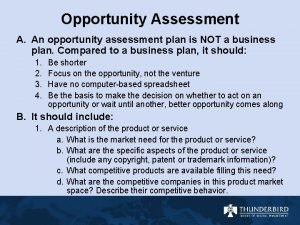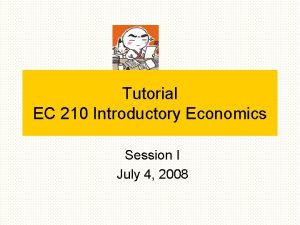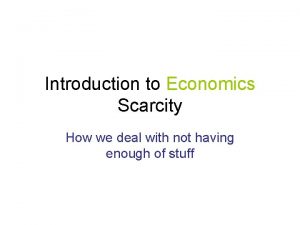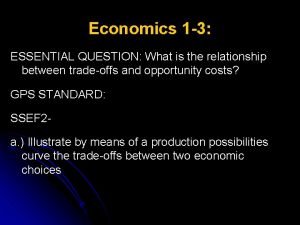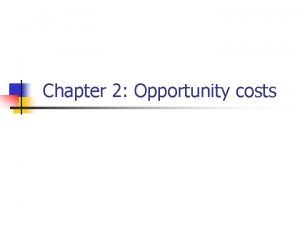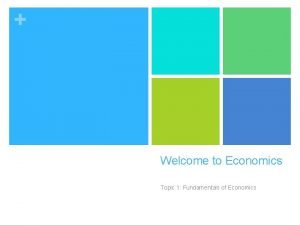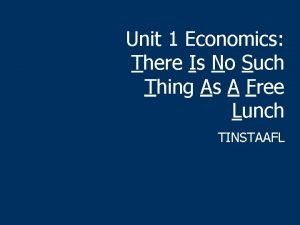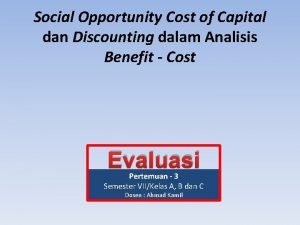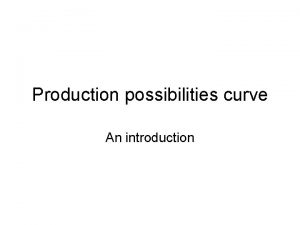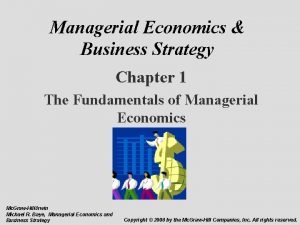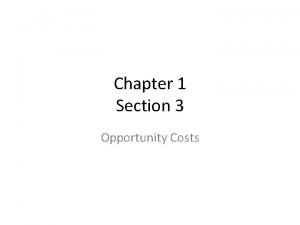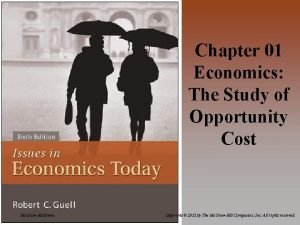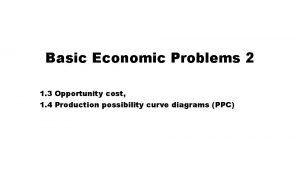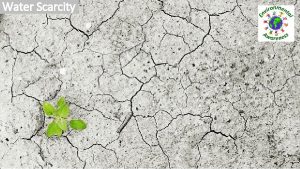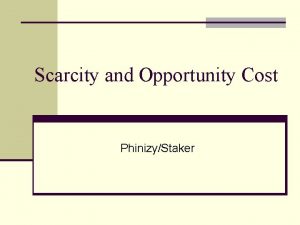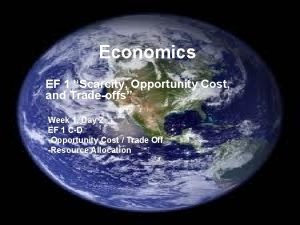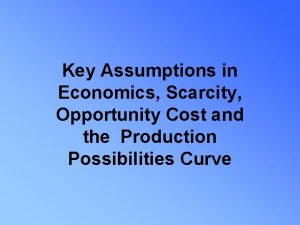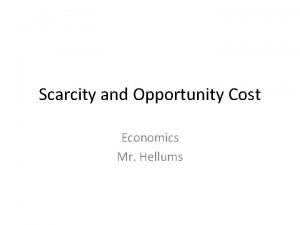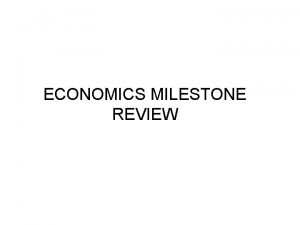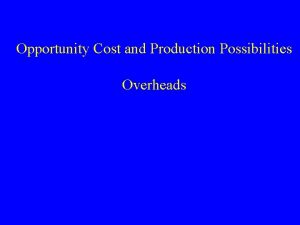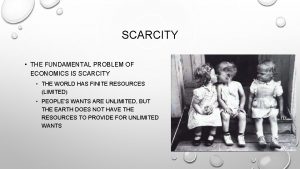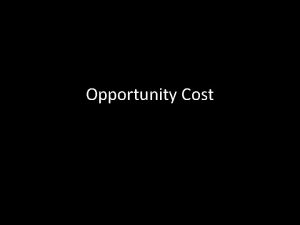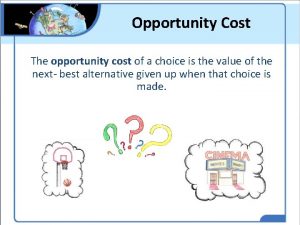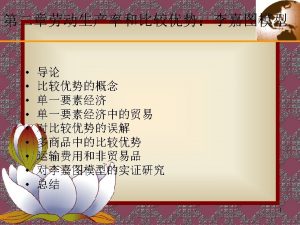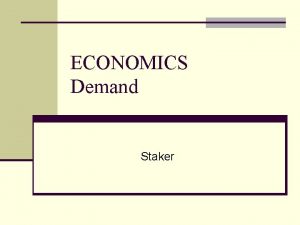Scarcity and Opportunity Cost Staker ECONOMICS n Economics

















- Slides: 17

Scarcity and Opportunity Cost Staker

ECONOMICS n Economics: the study of how people use scarce resources to satisfy unlimited wants n Microeconomics: study of behavior and decision making by small units such as individuals and firms. n Macroeconomics: study of the economy as a whole and decision making by large units such as governments and unions.

SCARCITY n SCARCITY: society doesn’t have enough resources to produce all the things people would like to have. n It is the fundamental economic problem

TRADE-OFFS & OPPORTUNITY COST n Trade-offs: other choices you could have made when you spend your $ or time. n What are you giving up when you make a choice? n Opportunity Cost: the most desirable alternative given up when making a decision n Opportunity cost is the cost (VALUE) of the next best trade-off

Would you rather… n Sleep late or go on a Caribbean cruise? n Sleep late or go to the mall with friends? n Sleep late or study for a test? Whatever you chose depended on the opportunity cost of the alternative…what you were willing to sacrifice.

Wants vs. Needs and Goods vs. Services n Wants=desires n Needs=necessities n Goods=physical objects such as clothes or shoes n Services=activities or actions that one person performs for another (mechanic, electrician) n Think of an example for each of these terms and put in your notebook

OPPORTUNITY COST n Time spent, convenience also has an opportunity cost.

OPPORTUNITY COST n Mr. Petty owns a small shoe store but has NO employees. On an average day he takes in $200 in sales, and that’s about what he expects to make this Friday. Mr. Petty is offered an opportunity to go on a day-long competition on a local radio show on Friday. If he goes on the show he will have to close his shop, and will lose any sales he would have made for the day. At the radio show, he will compete against 100 other listeners, and the winner will receive $10, 000. The game is based entirely on luck, so each of the 100 listeners has an equal opportunity of winning.

OPPORTUNITY COST n If he goes on the show, what is Mr. Petty’s opportunity cost? n Do you think he should go on the radio show? Why or why not?

4 Factors of Production (C-E-L-L) n CAPITAL: tools, equipment and factories used to produce goods and services. n ENTREPRENEURS: people who take risks in search of profit; they start new businesses or bring new products to market. n LABOR: people with all their efforts, abilities and skills n LAND: gifts of nature, not created by human effort

4 FACTORS OF PRODUCTION ILLUSTRATION ASSIGNMENT n Create an illustration about the 4 factors of production. The illustrations must be COLORED and should include: 1. A label of each of the 4 factors 2. A short description/definition of each factor 3. Pictures with at least 3 items representing each of the 4 factors. (3 pictures for capital, 3 for labor, 3 for land, etc. )

3 Basic Economic Questions 1. WHAT to produce? 2. HOW to produce? 3. FOR WHOM to produce? **Society must answer these 3 questions as long as there aren’t enough resources to satisfy the problem of scarcity**

3 Basic Economic Questions n “Apple Computers to Begin Manufacturing Computers Made Specifically for Elementary Children” n “Powerade Will Be Sold in All High Schools Next Year. ”

3 Basic Economic Questions n “China Will Focus on Increasing Rice Production in 2007” n “DVD Players Will Now Be Manufactured Entirely by Robots”

3 Basic Economic Questions n “United States Hopes to Become the World Leader in Potato Production” n “Henry Ford Revolutionizes Automobile Production by Using an Assembly Line”

Review Activity n Write 3 newspaper headlines on your own: one for each of the 3 Basic Economic Questions. n You will share one of them with the class and the class will guess which question your headline is addressing.

Create your own business n Imagine that you are an entreprenuer starting your own business. First, what kind of business would it be? (What good or service are you providing? ) n Be sure to give AT LEAST three aspects of LAND, 3 aspects of LABOR, and 8 aspects of CAPITAL needed to successfully run and manage your business. n
 Scarcity, choice and opportunity cost example
Scarcity, choice and opportunity cost example Trade off and opportunity cost
Trade off and opportunity cost Opportunity cost
Opportunity cost Take home pay
Take home pay An opportunity assessment plan
An opportunity assessment plan The basic economic problem results from scarcity.
The basic economic problem results from scarcity. Trade off definition economics
Trade off definition economics Trade off and opportunity cost
Trade off and opportunity cost Opportunity costs and trade offs
Opportunity costs and trade offs Marginal opportunity cost
Marginal opportunity cost Trade-off vs opportunity cost
Trade-off vs opportunity cost Opportunity cost vs trade off
Opportunity cost vs trade off Social opportunity cost rate adalah
Social opportunity cost rate adalah Opportunity cost on ppc
Opportunity cost on ppc Opportunity cost in accounting
Opportunity cost in accounting Section 3 opportunity cost
Section 3 opportunity cost Ppf opportunity cost
Ppf opportunity cost Opportunity cost problem example
Opportunity cost problem example




